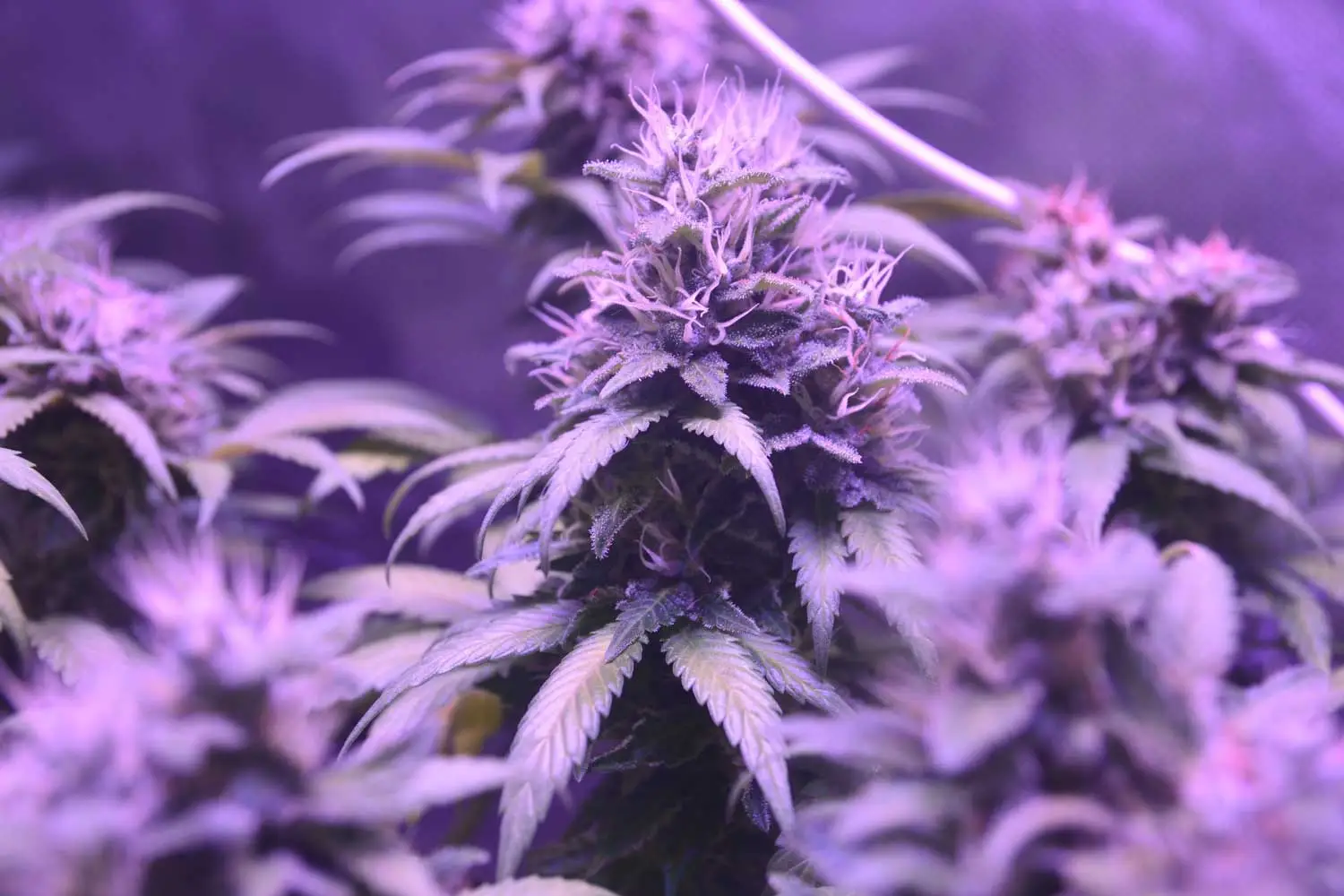Why is my Weed Bleeding Purple in Water?

People have been fascinated with the cannabis plant’s vast array of hues and traits for centuries. Cannabis can range widely, from deep green to bright purple. Some cannabis enthusiasts have come across a conundrum and ask themselves, “Why is my weed bleeding purple in water?” In this guide, we solve the scientific riddle that gives cannabis its striking range of hues. We’ll look at the roles of anthocyanins, genetics, environment, and the fascinating transformation that happens when water comes into contact with cannabis.
Photo: Pexels
The role of genetics in determining the strain’s color
Cannabis comes in various shades, and one of the primary factors influencing its color is genetics. Just as human genetics dictate our eye and hair color, cannabis genetics play a pivotal role in determining the hues of the plant’s leaves and buds.
Some strains are predisposed to have a purple color.
The water-soluble flavonoids called anthocyanins, which give different plants their purple, blue, or red hues, appear more readily in these strains due to particular genes. These genes can result in some cannabis strains consistently exhibiting purple characteristics.
Anthocyanins and their role
Anthocyanins are the unsung heroes behind the captivating colors of plants, including cannabis. These water-soluble molecules, which belong to the flavonoid subgroup, are found in leaves, fruits, and flowers. Their existence greatly influences a plant’s color or hue.
Anthocyanins, which cause the purple, blue, or red hues, work their magic by giving various plant sections their distinct tones. Certain cannabis strains possess the genetic capacity to generate anthocyanins. Due to the predominance of chlorophyll, marijuana is typically associated with a greenish color.
However, these unique strains produce anthocyanins, which cause the plant and buds to turn purple. Most cannabis strains remain predominantly green for the majority of their growth cycle. It’s only during the final weeks of flowering that the shift from green to purple occurs. The plant ceases to produce chlorophyll and begins producing anthocyanins, resulting in the vibrant purple we so often admire.
Cold stress and purple pigmentation
In the past, the purpling of cannabis was often a result of the plant being exposed to cold or harsh conditions, typically occurring in the fall in temperate climates. These adverse conditions triggered a stress response in the plant, leading to the development of purple pigmentation. This purpling was a protective mechanism for the plant, helping it cope with environmental challenges.
Environmental factors: light exposure and nutrient balances
Apart from genetics and stress, environmental factors have a significant impact on how cannabis looks. Light exposure and nutrient balances are crucial components that can either accentuate or mute the purpling of cannabis strains.
Cannabis plants exposed to colder temperatures or subjected to shifts in light cycles during their flowering period may intensify their purpling response. Additionally, maintaining the right balance of nutrients, particularly macronutrients like phosphorus and potassium, can also impact the vibrancy of purple colors in the plant.
Why does weed turn water purple?
It’s not unusual for cannabis enthusiasts to observe a phenomenon where it appears that their purple weed is “bleeding” purple in water. This striking visual display often mesmerizes people, and it’s essential to understand the science behind it.
When purple cannabis comes into contact with water, especially when it’s being prepared for consumption, a captivating phenomenon unfolds. Weed turns water purple because specific anthocyanins, which are responsible for the purple and other vibrant colors in the plant, may gently disperse into the water.
As these anthocyanins mix with the water, they create a mesmerizing effect reminiscent of purple “bleeding.” This visual transformation adds an enchanting dimension to the cannabis experience, captivating seasoned enthusiasts and newcomers alike.
Chasing purple dreams
So, the next time you find yourself face-to-face with a striking batch of purple weed, seize the opportunity to delve into the enthralling world of cannabis colors. From the intricate interplay of genetics to the mesmerizing influence of anthocyanins and the delicate dance of environmental conditions, each bud tells a unique story of its growth and development. The art and science of cannabis colors not only pique the curiosity of seasoned cannabis connoisseurs but also provide an entry point for those who have an appreciation for the captivating beauty and the intricate complexities of nature.
